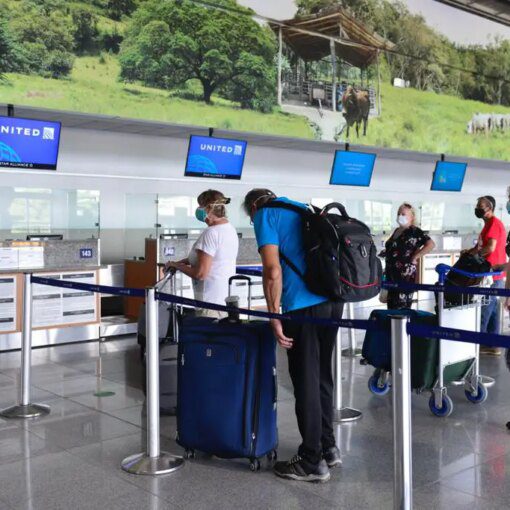QCOSTARICA — Today, Tuesday, March 19, the dollar exchange rate officially fell below ¢500 colones, a number that could affect the creation of new jobs, hit borrowers hard with high payments and Costa Rica remains competitive in attracting foreign investment.
Experts consider it urgent to return to a point of balance with the exchange rate Otherwise, there is a risk of making the country even more expensive and losing countless jobs associated with the export sector, tourism, and free zones.
Having a neutral or balanced exchange dollar rate that convinces all sectors is not easy, but a good indicator would be when no one talks about the dollar as a problem.
– Advertisement –
In some respects, it is similar to a soccer referee who remains inconspicuous during a game, thereby eliminating any suspicions of bias.
According to experts, the equilibrium point is approximately ¢620. Last week, the dollar exchange at both state and private banks fell below ¢500.
This morning, the Banco Central de Costa Rica (BCCR) – Central Bank – set the reference exchange rate at ¢499.72 for the buy and ¢505.80 for the sell, prompting banks to quickly adjust their rates ranging from ¢492 and ¢496 to buy and ¢506 and ¢514 for the sell.
The sharp drop in the dollar exchange rate in the last 18 months has made Costa Rica the world champion in appreciation of the local currency, according to Economía Hoy economist, Gerardo Corrales.
This indicates that no other country has seen such a significant increase in the value of its currency compared to the U.S. dollar.
“One has to look for a neutral exchange rate. When the exchange rate was ¢620, no one talked about the exchange rate. When it began to rise to ¢700, debtors in dollars and those earning in colones began to get nervous and raised alarms. Now that the exchange rate falls to ¢500, it is the exporters, hoteliers, and local producers are reacting,” said Corrales.
– Advertisement –
The problem is that Costa Rica is an economy very dependent on the external market, so a drop in the value of that currency has a high impact.
According to Adriana Rodríguez, general manager of Acobo Sitio de Bolsa, the high levels of international trade in Costa Rica, along with its partially dollarized economy and dominant tourism and agriculture industries outside the Greater Metropolitan Area (GAM), result in a negative impact on companies’ profit margins when the dollar appreciates rapidly.
Rodríguez mentioned that companies may start operating at losses once the dollar reaches certain critical levels.
Financial analyst Daniel Suchar suggested that the ideal value for the productive sector and debtors should fluctuate between ¢620 and ¢640.
– Advertisement –
The ideal is for Costa Ricac to maintain a stable exchange rate to ensure competitiveness in the productive sector and prevent excessive loan payments for debtors using dollars.
“When companies experience losses from fluctuations in exchange rates, it jeopardizes their long-term viability and has the potential to impact employment nationwide. The combination of exchange rate values exceeding those from a decade ago and rising costs of inputs, social charges, salaries, and public services is creating financial challenges for businesses and affecting the sector’s competitiveness,” said Shirley Calvo, Executive director of the Cámara Nacional de Turismo (Canatur) – National Chamber of Tourism.
Carlos Wong, President of the Free Trade Zone Association, “In highly fragmented markets like Costa Rica, an exchange rate is required that allows the country to be competitive without affecting inflation goals. If the appreciation of the colon continues, there will be a further deterioration in the competitiveness of our exports and an increase in production costs. A reduction in the Monetary Policy Rate is required, as well as greater intervention by the Central Bank with the exchange rate.”
Experts consulted by Costa Rica’s financial newspaper, LA REPÚBLICA, have outlined several measures that could be taken to gradually increase the dollar exchange rate in order to maintain a balance. These measures include:
- Interventions by the Central Bank in the exchange market to moderate appreciation levels
- Decreasing the monetary policy rate, supporting the growth of the coverage market
- Adjusting the minimum legal reserve
- Assuming the consequences of delayed decisions such as not paying the FLAR loan on time.
- Economic agents, especially pension operators, should not be prevented from changing their portfolios in terms of currency.
In defense of the current dollar exchange, Costa Rica’s vice-president, Stephan Brunner, to businessmen: When they had the high dollar exchange rate they did not complain.
“It is not valued that every time they have problems, they are requesting that it be raised or lowered (…) In 2020 the exchange rate was very high and at that time the businessmen did not ask the Central Bank to lower the dollar. They had around 2 years and 8 months, an exchange rate much higher than the medium-term equilibrium and there they did not complain or ask that the Central Bank rectify downwards. Demanding that the exchange rate has to be high for them to be profitable, that is not the way to ask for help,” Brunner said On Monday to legislators during a congressional hearing.
Brunner indicated that it will be after Semana Santa (Easter) that he will meet with the productive sector to explain the government’s position.
– Advertisement –
Source link
Rico



